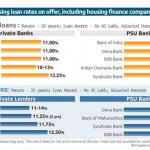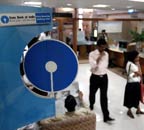For the second consecutive time, Reserve Bank of India (RBI) Governor D Subbarao left key interest rates unchanged to fight inflation.
The key lending (repo) rate, at which banks borrow from RBI, has been retained at 8 per cent despite demands from the industry to cut interest rates to spur economic growth.
The Cash Reserve Ratio (CRR) – the amount of deposits banks keep with RBI in cash – has also been retained at 4.75 per cent.
However, as a liquidity inducing-measure , the governor brought down the Statutory Liquidity Ratio (SLR) – the amount of deposits banks park in government bonds – by 1 per cent, to 23 per cent, effective August 11.
The move may not be as effective since banks’ average SLR holdings is already around 30 per cent.
RBI also lowered the growth projection for 2012-13 to 6.5 per cent from the initial 7.3 per cent, in view of the ongoing global economic slowdown.
“The primary focus of monetary policy remains inflation control in order to secure a sustainable growth path over the medium-term,” Subbarao said in the first quarter monetary policy review.
The pro-growth lobby, which is worried over economic growth slipping to nine-year low of 5.3 per cent in the January-March quarter, wanted RBI to bring downthe high-rate structures to induce faster economic expansion.
RBI has refused to give-in to the demands, saying that “in the current circumstances, lowering policy rates will only aggravate inflationary impulses without necessarily stimulating growth”.
Taking note of the deficient monsoon rains and subdued prices of petroleum products, RBI raised its fiscal-end inflation projection to 7 per cent, from 6.5 per cent earlier.
Stock markets reacted negatively to the policy and the 30-stock BSE Sensex fell over 71 points soon after the review, after it had traded 55 points higher in the morning trade.
The headline or Wholesale Price Index-based inflation in June was 7.25 per cent, while at the retail level it was at an alarming 10.02 per cent.
RBI on Tuesday flagged external risks emanating from the Euro area and “fiscal cliff” in the US, uncertainties on commodity prices, deficit monsoons and the “twin deficits” as risks to the monetary policy.
In its earlier mid-quarterly review on June 16, the central bank had kept the policy rates unchanged to combat high prices.
“Failure to narrow the twin deficits (current account deficit, or CAD, and fiscal deficit) with appropriate policy actions threatens both macroeconomic stability and growth sustainability,” RBI said, adding that financing of fiscal deficit through domestic savings will crowd out private investment, harming growth.
CAD for FY12 was at a 30-year-high of 4.2 per cent of GDP, up from 2.7 per cent in 2010-11.
The government has also been unable to rein in the fiscal deficit at the budgeted levels. It shot up to 5.9 per cent last fiscal as against the budgetary target of 4.6 per cent.
RBI also advised the government to take immediate steps to control fertiliser and fuel subsidies and keep them under 2 per cent of GDP.
The central bank said it will continue with open market operations to ensure adequate liquidity. It had injected Rs 86,000 crore in the financial system during the first quarter.
[“source-businesstoday”]




